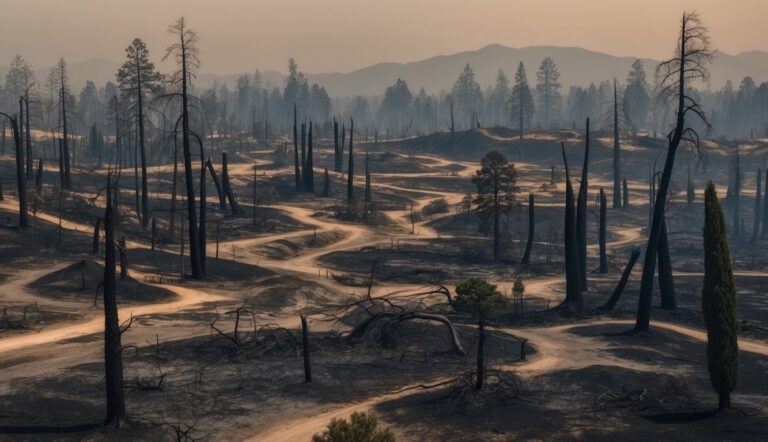As firefighters make significant strides in combating some of the most catastrophic wildfires in U.S. history, the scale of destruction is becoming alarmingly clear.
While the world grapples with various crises, such as ongoing conflicts and shifts in U.S. political leadership, the narrative has largely centered around the wildfires engulfing the Los Angeles area.
The estimated economic toll from these blazes could reach into the billions.
So far, nearly 10,000 homes have been razed, forcing almost 200,000 residents to evacuate.
Assessment of Overall Damage
In a startling turn, estimates for the total economic impact of the wildfires have skyrocketed within just 24 hours.
AccuWeather updated its figures, now estimating losses to be between $135 billion and $150 billion, a dramatic increase from earlier projections of $52 to $57 billion.
AccuWeather’s Chief Meteorologist described the devastation as heart-wrenching, particularly as the flames ravaged upscale neighborhoods.
Given the evolving situation, it’s likely that damage estimates will continue to rise in the coming days.
Insurance Ramifications
Current estimates for insured losses are now set between $8 billion and $20 billion.
This reconsideration is due to a significant uptick in affected properties.
With over 10,000 homes confirmed as lost, J.P. Morgan has raised its expectations for insured losses to exceed $20 billion.
Wells Fargo concurs, predicting that the overall economic impact could eclipse $60 billion.
Anticipated loss models from analytics firms like Karen Clark & Company and CoreLogic should provide further insights soon.
Current Fires Situation
At one point, a series of six rapidly spreading fires threatened both property and lives in the region.
As noted in CalFire’s latest update, the largest of these fires, the Palisades Fire, has already scorched nearly 20,437 acres, with containment efforts still only achieving an 8% success rate.
The Eaton Fire in Altadena has affected more than 13,690 acres but has reached only 3% containment, while the Kenneth Fire, spanning around 1,000 acres in Los Angeles and Ventura counties, is 35% contained.
Other smaller fires include the Hurst Fire (771 acres, 37% contained), Lidia Fire (395 acres, 75% contained), and the now-contained Sunset Fire in Hollywood Hills, which expanded to 50 acres.
The rapid advance of the flames has been significantly driven by hurricane-force winds, with gusts exceeding 80 mph due to the Santa Ana winds.
The National Weather Service has indicated that severe fire conditions will persist through Friday morning, but an improvement is expected in the afternoon and into Saturday.
Weather forecasts predict a change in wind patterns, shifting from northeast winds around 5 mph to south-southwest winds later in the day, with softer gusts anticipated for Sunday.
AccuWeather’s experts have warned that ongoing dry conditions combined with winds increase the risk of new fires igniting and spreading quickly, complicating firefighting efforts.
Wind conditions could once again intensify on Monday, potentially reaching gusts of 40 to 60 mph in select areas.
Southern California Edison (SCE) has begun receiving alerts from insurers concerning evidence preservation linked to the Eaton Fire.
Although officials have not established a direct connection between the utility’s operations and the fire’s ignition, SCE’s history with past wildfires places them under scrutiny.
In light of previous liabilities and extensive litigation, SCE has adopted precautionary measures, including proactive power shutoffs during high-risk fire conditions.
While the utility asserts that no agency has blamed their equipment for starting the fire, they remain vigilant in ensuring safety and operational integrity.
A mistaken alert sent to millions of Los Angeles residents about an evacuation warning led to widespread confusion, reaching even those who were not at risk.
This erroneous notification urged residents to be prepared for potential evacuations but was quickly rescinded.
The head of the Los Angeles Office of Emergency Management addressed the error publicly, underscoring the importance of keeping emergency alerts activated on personal devices.
In response to the ongoing crisis, Insurance Commissioner Ricardo Lara has enacted a one-year moratorium on the non-renewal and cancellation of insurance policies.
This order affects residents in the areas surrounding the Palisades and Eaton fires, regardless of whether they suffered direct losses.
This measure aligns with standard protocol following devastating wildfires, similar to the protections previously enacted for over 200,000 policyholders affected by the Mountain Fire.
Source: Claimsjournal






